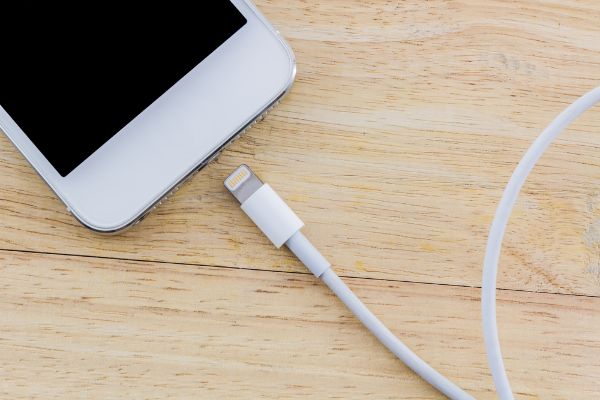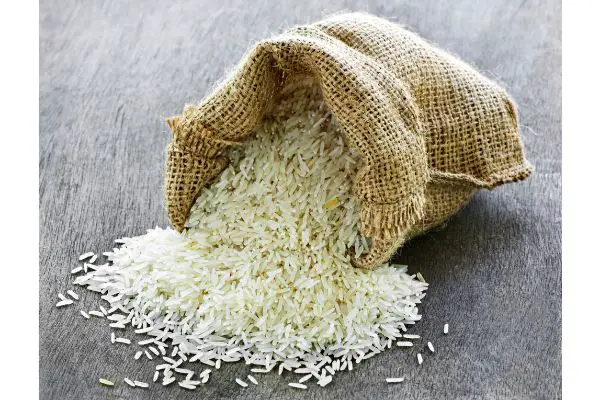Disclaimer: This post may contain affiliate links, meaning we get a small commission if you make a purchase through our links, at no cost to you. For more information, please visit our Disclaimer Page.
The iPhone has been a smartphone staple for many years, and users appreciate the overall compatibility it has between devices made by the same company.
Its own iOS operating system, with its many features that are exclusive to Apple, also helps this phone to maintain some of its popularity with each new iteration that arrives on the market. As with any smartphone, you’ll need to charge the battery from time to time. This is not usually an issue, but it can become problematic if you’re faced with an iPhone that has taken on water damage.
If you’ve exposed your phone to water accidentally, one common thing you might discover is that the charging port may not fit physically inside the phone anymore. In this article, we will explore why the charger might not do so after taking on water damage.
We’ll also discuss whether water damage could affect the overall charging process itself, damage the iPhone irreparably, and some methods you might be able to use in order to dry out the charging port, possibly restoring the device’s charging function to working order.
Table of Contents
Why Won’t an iPhone Charger Won’t Fit After Water Damage?
The bottom part of the iPhone is one of the worst places for it to take on water. Keeping the entire device away from excess moisture is a good idea.
Still, the part with the charging port is particularly important in this regard, as any water it takes on can make it difficult or impossible for the connector on the charging cable to fit inside.
Water in the phone’s casing can cause moisture buildup that leads to either clogging up the phone’s internal components or changing dimensions so that some parts will not fit together as they should.
If you get water inside the phone, other components can also take damage from the moisture.
Before we get into how water might affect the health of the iPhone overall, drying out the iPhone, and other tips, it is important to note that you should not attempt to charge or turn on an iPhone that water has damaged recently.
In most cases, the phone won’t turn on, or you will be unable to plug it in for charging.
At worst, though, doing any of this could fry much of the hardware inside your phone.
While it may be tempting to try to turn on your iPhone to see if it still works, you should resist doing so until you’ve followed some steps and allowed enough time to dry out the phone’s internal parts sufficiently.
Can Water Damage Affect iPhone Charging?
Yes. Water damage can impact the iPhone’s ability to charge itself up. Precisely what might affect the iPhone can depend on how much water it has taken on, time spent in the water, how long before the user managed to treat it for water damage, and other factors.
However, it can also affect the charging cable or ports themselves. Water damage to the iPhone might transfer excess moisture to the cable’s connector if a user plugs it into the device too soon.
In turn, this could mean that the connector itself is more susceptible to rust or corrosion. If the connector is damaged in this way, it could affect the whole process for charging the iPhone.
Part of the issue here comes from the misconception that length of time is the biggest factor in water damage.
While you certainly don’t want to leave your iPhone floating in water, where the particles of moisture end up within the phone can be a far greater concern than how long the device spent submerged or floating in liquid.
Because it is hard to know where the water will end up, liquid damage is one of the hardest troubleshooting. You can try to disassemble the phone for better drying or to get a look at the components, but this is only a step that someone who is experienced with the process should attempt.
In other cases, allowing a professional iPhone shop to take a look may be better.
Having said that, Apple’s warranty does not cover water or other liquid damage. Although a shop may be able to help you, you would be responsible for any expenses incurred while the phone is under repair.
However, this could still be more economical than buying a new iPhone of the same generation out of your own pocket. You can try other troubleshooting things to restore the iPhone, and we will cover those aspects in later sections.
Can Water Cause Permanent Damage to an iPhone?
We’ve talked about how water can affect the iPhone charging process already. However, damage of this type can impact the device itself, too. As with most things, this depends on many factors, but we will review a few common ones here.
Firstly, it can depend on the type of water inside the phone. A bit of freshwater is not as bad as saltwater.
Saltwater has properties that can cause far more corrosion than freshwater in a shorter amount of time. It could brick your phone quickly depending on where it ends up inside the device.
It is best to make sure that your phone stays with you and dry at all times if you are out and about in a saltwater environment.
Similarly, although it is not water, many juices can be highly damaging to iPhones. Most juice will have some water content in it anyway, but the main factor here is that the pH value for juices is lower than that of water.
A lower value here indicates a higher level of acidity. This means there is a greater chance of damage to the motherboard and other components the device needs to function. Because some acids can work on these sensitive parts, the likelihood of more permanent damage to the phone is higher.
Water’s pH value might make it easier to troubleshoot this issue, but the average user should still take the same precautions here. This includes treating the device like charging or turning it on could cause damage.
It is important to remember the differences between getting some water on the phone’s surface and getting it inside the phone’s casing instead.
With the former, many phones these days have some level of resistance to water that can allow you to wipe them off and be on your way.
Phone cases are meant to protect the device’s internal parts and are sealed up tightly around the ports. However, everything inside the phone is vulnerable to any water that comes inside, and water damage is generally permanent.
This could include just a bit of excess water that comes into contact with the phone for a few seconds. While you could get lucky with drying the phone out after some days, there is no guarantee that it can survive water damage of this type.
How Do You Dry Out a Charging Port?
Before we begin this section, we should say that there are some methods you could use here for troubleshooting that may work for you. One important caveat to remember is that the damage could be too severe to save the phone.
Therefore, nothing here guarantees that the iPhone will be in good working order, even if you dry out the charging port. As a reminder, don’t plug in or try to use the phone until at least let this part dry out completely.
1. You can put your phone before a moving fan to dry out the excess moisture. This will be blowing on the affected area, but the fan speed should help the droplets to evaporate faster than they ordinarily would.
2. Alternatively, try standing the phone vertically to let the water drip down and out naturally.
3. Use a soft towel to dry the entire surface of the phone around the port.
4. You may submerge the phone in rice for some hours or days, but remember to check the port for any grains of rice that might lodge themselves in there afterward.
Can You Dry an iPhone With a Hair Dryer?
Generally, it would be best to try not to dry out an iPhone using a hair dryer. Although you might consider heat a good approach to evaporating the water, it can cause many other issues. The concentrated air could blow the water further into the phone before evaporating it.
This is also why we don’t recommend blowing into the phone port to expel water. Further, the high heat could damage the seals around the phone, compromising the device’s integrity even more. Lastly, it could overheat or other damage the internals.
Conclusion
Water damage is never a good thing for any iPhone. While water that gets into the phone has some chance of causing permanent problems for the device, there are still a few things you can try to solve the issue.
Remember to address the moisture problem quickly, check what kind of liquid got in there, and don’t use repair methods that could cause further damage. Be sure your phone has had a chance to dry completely before turning it on or charging it.


